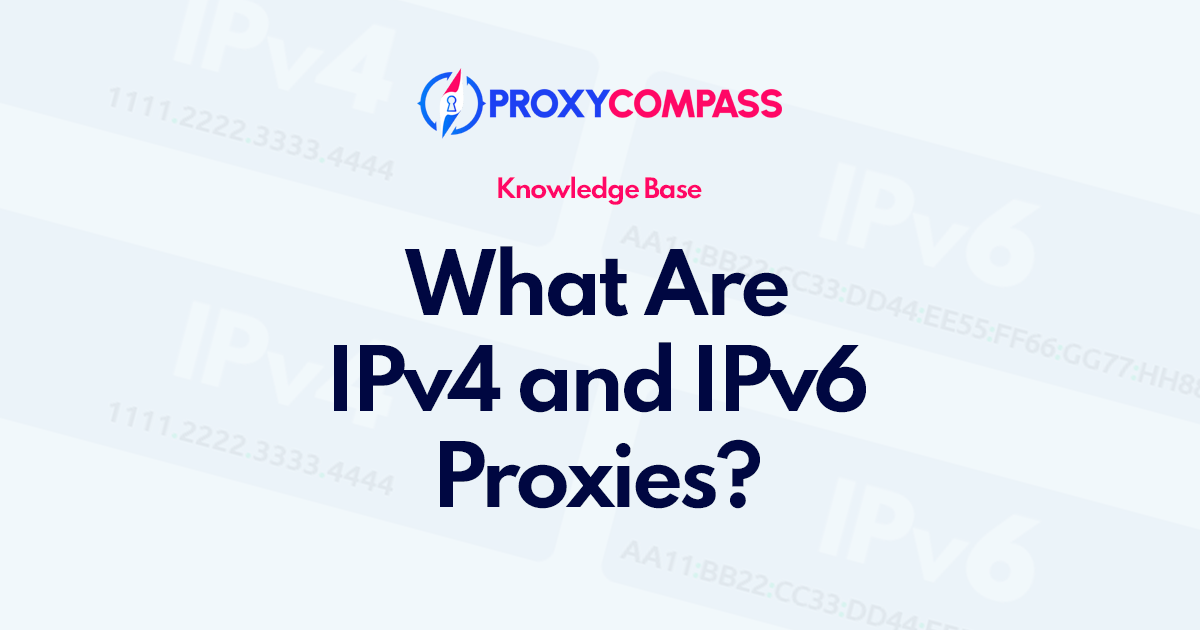
There are some significant differences between IPv4 and IPv6 proxies. In this article, we will present the most important points and discuss whether it is worthwhile buying IPv6 proxies.
IPv4 and IPv6: The most important facts at a glance
IPv4 is the fourth version of the so-called Internet Protocol. The protocol forms an important technical basis of the World Wide Web. A maximum of 4,294,967,296 addresses can be assigned in a network. This standard was established as early as 1981.
IPv6 addresses (available since 1998) are network addresses that uniquely address a host within an IPv6 network. Unlike other addresses, an IPv6 host has several IPv6 addresses per interface. The addresses have different validity ranges, for example, local link and global. With IPv6, 3.4 x 10 to the power of 38 addresses can be assigned.
IPv4 uses 32-bit addresses and is 4 bytes (32 bits) in size. The 32 bits are divided into 8 bit (1 byte) blocks for better readability. A dot is inserted between the individual blocks. An example: The binary IPv4 address 01111111.0000000.00000000.00000001 gives the IPv4 address 127.0.0.1.
An IPv6 address, on the other hand, consists of 128 bits, which are divided into 8 x 16 bits because of their long length. Each 4 bits are represented as a hexadecimal number. A group of numbers is made up of 4 hexadecimal numbers. A colon is inserted between the groups. For the sake of simplicity, leading zeros in the blocks are left out. Thus a sequence of 8 zeros can be replaced by two colons. An example of an IPv6 address is:
2001 : 0000 : 0000 : 0000 : 0001 : 0000 : 0000 : 0001
IPv6: Low trust for large Internet services
The IPv4 standard is currently supported by all websites and Internet services. But the situation is different with IPv6: This standard is much less trusted, especially by the major service providers (e.g. Google, Facebook, and Instagram).
Nevertheless, IPv6 is still supported. According to Google, the share of users accessing the world’s largest search engine with IPv6 is 29.62% – and rising. It is remarkable that the share of users with IPv6 has almost doubled since January 2017. IPv6 is most widespread in Western and Central Europe, North America, and Brazil as well as in India and Japan.
Is buying IPv6 proxies worthwhile?
In 2018, we conducted an experiment focusing on the applicability of IPv6 proxies. The goal was to evaluate the use of IPv6 in parsing Google result pages (SERPs). The following subnets were used:
- One IPv4 / 24 subnet (256 IP addresses)
- One IPv6 / 64 subnet (total number of IP addresses 18446744073709551616)
Requests were sent to the Google search engine from the available IP addresses. The result was astonishing: Both subnets used were simultaneously banned by Google. Captcha queries were displayed before the “ban”. A little later a permanent ban was imposed. This was applied to all IP addresses contained in the subnet.
The result of the experiment may surprise many IT experts – after all, the IPv6 network contains a much larger number of IP addresses. Experiments conducted on social networks produced similar results: The use of an IPv6 proxy for the purpose of “mass following” (meaning the mass collection of social contacts) leads to an immediate ban on the IP addresses used. IPv6 is apparently seen as a sign of spam by these services.
Conclusion
Currently, it is not worthwhile to use an IPv6 proxy. However, it is quite possible that this will change in the long run. However, industry experts are relatively certain that the situation will not change at least in the coming months and years.





